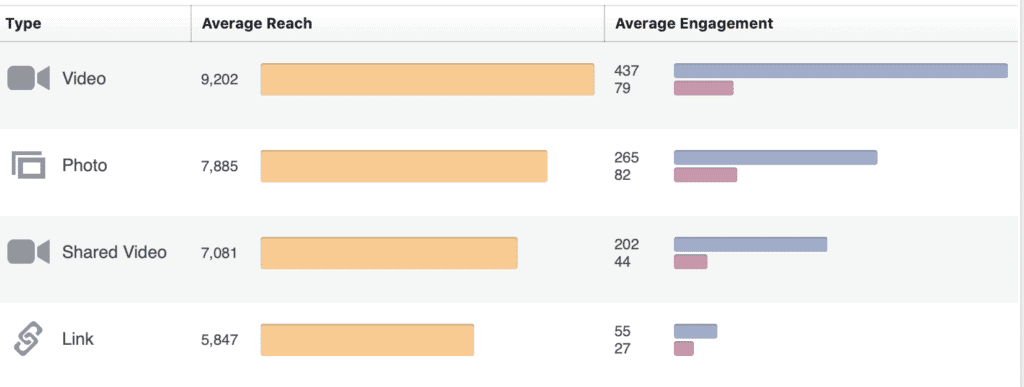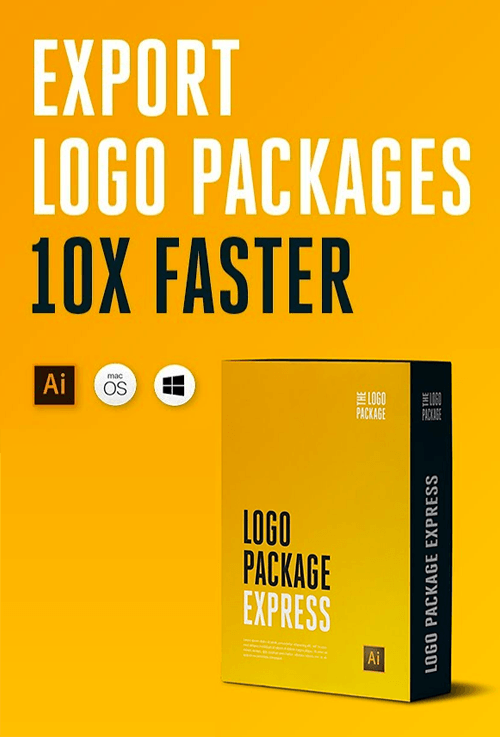1. Identify your goal
The first step to enhancing your engagement for your business is to acknowledge and review what your brand can achieve by using social media. Within this process it is vital to consider your key goals and to establish your target audience in particular, outlining your ‘target demographics’ such as, age and location. At this stage it is important to do some ‘target audience research’, begin by thinking about what your clientele want from you, further this with exploration of similar businesses and take note of how they have decided to interact with their following.
2. Recognise what works well for your audience
Once you have established the content that will be valuable for your audience you need to begin experimenting with what style of post impresses them most. The Facebook for Business feature allows you to explore which style of post (photo, video or status update) connects with your following best. As you can see from the screenshot below, Facebook separates your post by ‘type’ such as, video, photo, link, shared video and status. These types are then coupled with an average of how well they perform in post reach and average engagement (through comments, likes and shares). This gives great insight into how well your page is performing but should also reaffirm what type of content enhances engagement.

3. Analysing your schedule posts regularly

In my previous article, ‘5 ways to boost your social media following and increase engagement’ I mentioned the importance of establishing a consistent posting pattern across your social platforms. Facebook for Businesses ‘insight’ tab gives you access to essential information that will ensure you are optimising your engagement as much as possible. Within the ‘Post’ section of the insight tab you will find a graph (figure 2) that acknowledges when your fans/ following are most likely to be online, along with a detailed view of your posts to your channel (figure 3).
Facebook separates the analysis of each post into the following breakdown:
- Targeting – this acknowledges whether you have shared your post publicly or privately
- Reach (organic/paid) – details the total interaction with your following through organic (non-paid) advertising or paid advertising.
- Engagement that has two strands:
- Post clicks in light grey/purple
- Comments and shares in dark purple – both points acknowledge the number of times a user has engaged with your content through clicking on the post, liking, resharing or commenting.


When analysing your insights, both the ‘reach’ and ‘engagement’ are crucial in pinpointing how invested your users are with your content. From figure 3 we can see that all content posted with, ‘Guest Announcement’ in its opening tag line received an average post reach of 4k and presented high engagement for both ‘post clicks’ and ‘comments and shares’. Mapping this with your key times to post graph, (figure 2) -which is what this example often seems to do, shows how effective and engaging specific content can be.
If you are active on both Facebook and Instagram it is likely that your target audience will be the same, and therefore engaging with your content within a similar timeframe. To trace your engagement on an Instagram business profile you can do so via the ‘Instagram dashboard’.
Here you will find the following insights:
- Impressions – calculates the number of times your post has been viewed.
- Profile visits – provides insight into the number of times a user visited your profile by clicking on your username.
- Reach – the total amount of views each individual post has.
- Discover – this section allows you to determine the percentage of users that engaged with your post but did not opt to follow you.
When compared, Instagram differs slightly with its metric for engagement due to the platform being a combination of photos and videos within a feed or story. This has often been referred to as ‘Vanity metrics’ whereby likes are generated due to the content being aesthetically pleasing. Therefore, it is essential to review these insights at least once a month to ensure you are optimising your businesses potential on each of your platforms.
4. Engage with your engagement

To effectively respond to your audience, it is best to separate your engagement into types. ‘Proactive engagement’ sees you as the business, reach out to your customers. This is a great way to keep your marketing strategy topical and will enhance your profile through, ‘putting a face to the name’ (for your brand). ‘Reactive engagement’ focuses on the direct response you receive to your social platforms be it through mentions, direct message, or comments. For effective ‘reactive engagement’ it is important to establish how you intend to interact with these comments. Will you aim to respond to each comment or just like them? With a steady flow of scheduled posts optimised by your key times and a focus on both proactive and reactive engagement will see further boost in your following and engagement.
Conclusion: 4 strategies for growing your social media audience
Now that you have read this article, you will have a deeper understanding of how engagement works within social platforms. The 4 tips above, will allow you to evaluate and manage consistent and engaging social media content across several social channels to capture the attention of potential clients or customers.
If you’ve been reading this and feel that you would rather hand over the task to an expert who will manage your multi-channel social media strategy for you, then please get in touch with us at hello@cleardesign.studio









